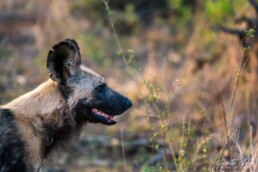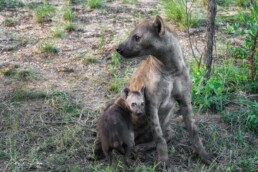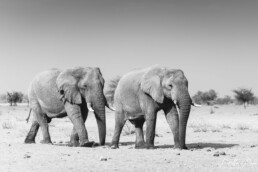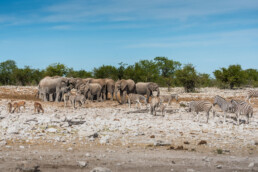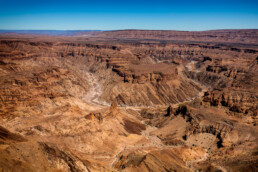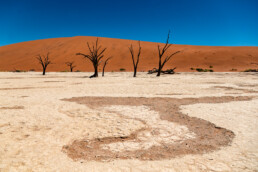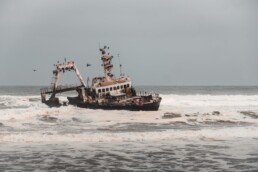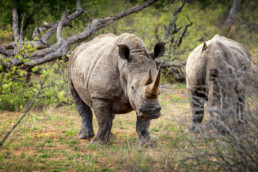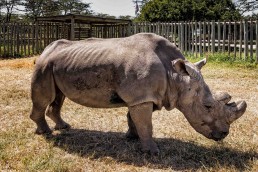Wildlife Adventures and Rapidly Changing Plans
Where Are We in January 2021?
We finally returned to South Africa in late November 2020 to continue the expedition. The plan was to explore Kruger National Park and nearby conservation projects during December 2020 and January 2021.
November 2020
After implementing our return plan to Africa in late November 2020, we lived the first weeks around Pretoria, where we did numerous TLCs and upgrades to Honey Badger the Defender. She had been standing for many months while we were away and was in dire need of all the TLC.
Everything went quite smoothly with upgrading our loyal 4×4, and if we have the time, we’ll tell you more about them later. Among other things, we built a sleeping system to the back of the car and upgraded to a heavy-duty suspension; big thanks goes to Rob Keen from Bespoke4x4 for great service and help!
Also, huge thanks go to our new friend Heinrich Gericke who went above and beyond to help us move and store HB the Defender while we were still in Finland! We were blown away by his honest will to help out a fellow traveler, and we continue to be amazed by the general kindness of people in Africa.
December 2020
We did manage to spend almost four weeks in the iconic Kruger National Park! We stayed in several campsites from the South to the North, from the Crocodile Bridge to Punda Maria. During this revival time in the bush, we had many awesome wildlife encounters. Especially with the elusive African Wild Dogs!
We will write a detailed report from our time in Kruger later on! Just after Christmas (on the 28th of Dec), pretty much “out of the blue” came South Africa’s president’s announcement of the new lockdown level and rules. The shift was to “adjusted level 3” – but luckily without any restrictions on movement. So we continued our stay inside the Kruger National Park.
December still brought some disrupting news, as we were hoping to cross the border to Zimbabwe in late January 2021. But Zimbabwe closed its borders during December, and thus we had to change plans again. This time we planned to cross into Mozambique instead.
January 2021 – Are We Stuck or Not?
We came out of Kruger at the beginning of January and stayed a short while around Hoedspruit to reload ourselves and do some “running errands.” We also tried contacting several local conservation organizations and are in the middle of discussions with a few.
We had originally planned to cross into Mozambique on the Friday, 15th of Jan, and had already made accommodation reservations, etc. The next review of the lockdown rules was scheduled to be on the 15th, so we had planned to escape South Africa by then.
But then, without any pre-notification, the president’s announcement came already on Monday, the 11th of January – and it again brought us bad news. South Africa has now closed its borders according to the reviewed regulations of the “adjusted level 3 lockdown” until February 15th. So it seems that we are stuck – again.
However, it’s still unclear whether foreign nationals could still cross the borders to a neighboring country with open borders (with a negative PCR test). The “official” story (the official gazette) says no, but we got the information that it may be possible after all through some of our contacts.
At the time of writing this (Jan 16th, 2021), we are still in the process of figuring this out. If we can go to Mozambique, that will probably be our number one plan. But if not, it may be that we could shortly return to Namibia and then continue onwards through Zambia. It’s all “go with the flow” at the moment, and we’ll update you as soon as we know more!
But one thing is for sure, all this has made our way forward much more difficult at the moment, but then again – nothing is ever easy! And we are not going back to Finland anymore. Instead, we are determined to make this work – no matter what!
In general, we hope that most borders would remain open, and we can continue on our mission through Africa for wildlife conservation. We hope all our friends around Africa will stay safe during this trying time. Everything will pass!
Wildlife needs us more than ever now. We will win this – together!
October 2019 Recap: Wildlife-Themed Road Trip in Namibia & Off-Road Training in Windhoek
After all the Overlanding preparations (see the September recap), we finally got “off-road expedition ready” during October. EDIT: It later turned out that we did not, but we’ll update you on that in December’s recap. We did our first – epic! – road trip with Honey Badger, touring Moon Landscape, Damaraland, Twyfelfontain, and of course, the iconic Etosha National Park.
OCTOBER BROUGHT US STUGGLES AND WILDLIFE SIGHTINGS
We are lagging a bit behind with these monthly recap writings as so much is going on all the time that is eating our time and energy like a monster with an endless appetite. Unfortunately, many of the things happened have not been positive ones but we are going on no matter what.
And we’re going to catch up with this series, so stay tuned! And now, let’s get started with what happened in October.
Serious Off-Road Driving Training on Tony Rust’s Race Track in Windhoek with Henry Bisschoff of Land Rover Owners Club Namibia
We spent a whole day practicing some serious off-road driving with Henry Bisschoff, who is the president of the Land Rover Owners Club in Namibia. Around 10 AM, we drove to the Tony Rust’s Race Track just outside Windhoek and started doing some awesome stuff.
First, we learned how to engage the diff-lock and low-range gears in Honey Badger, and then it was showtime!
We learned how to drive up and down on really steep hills with bumps, holes, rocks, and branches. We also learned how to drive on top of big rocks, and what to do if your engine stalls while you have not reached the top of the hill.
Henry was a very patient and tranquil teacher and made an effort to show and explain things to us thoroughly. The first hills up and down were pretty scary, and our Honey Badger made huge noises while we drove! We were scared that something would break because of the sounds, but Henry said that there’s nothing to worry about, a Land Rover is supposed to make noise when it’s working hard.
Then it was just concentrating really hard on learning new tricks on this crash-course of off-road driving. After getting rid of the fear during the first few rounds, it started to be extremely fun, though very challenging. We learned how to inspect different obstacles, remove dangerous objects, decide on driving lines, and how to work together to tackle an obstacle safely.
Learning what to do if the engine stalls in the middle of an upward hill were thrilling to discover. We practiced with a slope that seemed to be almost 45 degrees steep, and our Landy was at a really steep angle. Staying tranquil and calm is the crucial part of off-road driving, and trusting your car is another one.
New Skills Are Always More Than Welcome
We think that all these news skills will come into use at some point on our journey, although avoiding trouble is high on our list. But you never know how things may turn out, and then knowing what to do is vital.
You wouldn’t think that we just got our driving licenses in May 2019, would you? It’s been a steep and quick learning curve that we’ve had to do, but it’s been fun and rewarding.
At the end of the day, Henry’s feedback was that Piritta took more risks but was a more tranquil driver, and Niina was the opposite, more considering as a driver and more careful. We were a bit surprised to hear this as we would have thought it to be the opposite.
What We Need to Work On
And the thing that we really need to work with to improve was our communication – because when someday there will be a real-life situation, and we have to get through a challenging obstacle(s), good communication and cooperation is the key to successful off-road driving!
We certainly don’t want to get into trouble because of bad communication, so we promise to work on that!
Honey Badger the Defender Showed Us a Different, a True “Bad-Ass” Side
Honey Badger showed a totally different side of her as a car that can go practically almost anywhere if driven correctly and made us very pleased in our choice of car on this expedition. Many people could have a different opinion about Land Rovers and their reliability. Still, then again, many people would defend Land Rover Defenders for being one of the best cars out there for Overlanding.
We, of course, think that Land Rover Defender is the best car on Earth and that it can take you anywhere and will run on practically forever if you just take good care of it. OK, it may need a fair bit more maintenance than some other 4x4s, but if you do the small repairs from time to time, you will have a fantastic beast of a car in your hands.
The Surreal Moon Landscape That Lives Up to Its Name
We had a brief visit of one night to the beautiful Moon Landscape nearby Swakopmund. We wanted to test our gear and get a brief experience of the bush.
The Moon Landscape is not far from Swakopmund. Just drive east on Welwitschia Drive by the road C28. It’s a great destination for a day trip or an overnight trip.
On the way you can see lots of welwitschias and a landscape like nowhere else, carved by the Swakop River.
During our drive we stopped on a few lookout points to take photos of this surreal landscape. Don’t you think that it really looks like the Moon?
WILDLIFE SIGHTINGS AND ROAD TRIPS THAT RAISED OUR SPIRITS
Visiting and Exploring the Western Part of Etosha National Park and the Olifantsrus Campsite
On our second visit to Etosha National Park in the middle of October, we decided to explore the western part of the park, which hasn’t been open to the general public for that long. The western part used to be accessible only to people who stayed in the NWR Dolomite Lodge and no one else.
Nowadays, there are one NWR lodge, the Dolomite, and the still pretty newish Olifantsrus Campsite that has only 10 campsites with shared facilities.
The best thing at the Olifantsrus campsite is the big and impressive, two-story hide built on stilts at a waterhole. From the upper level, you have great views over the pans, and the first floor brings you on eye-level with the game visiting the waterhole.
The lower level is covered with plexiglass, while the upper level has no barriers between you and the wildlife.
We spent two nights in Olifantsrus camp, and on both nights when we were visiting the hide, several black rhinos were visiting the waterhole. It was a humbling experience. Just sit and watch how the black rhinos walked, drank, and fought only a few meters away!
On the first night, there was a small fight between two male black rhinos, the other was a huge one, and the other almost half of his size and the smaller one started the quarrel. It was fascinating to observe. No harm was inflicted on either one of the rhinos, but a lot of growling was sure done.
Meanwhile, a mother and a baby watched from a small distance away, and one other lone black rhino roamed the surroundings. It was like watching a nature documentary, but this one was live in front of us!
The rhinos also came to the waterhole approximately at the same time on the second night, so they’re probably quite regular visitors.
We’d warmly recommend staying a few nights at Olifantsrus if you’re able to arrange a visit to the Etosha West, the hide alone is unique enough. And there are so few cars around compared to the Eastern side, which everyone visits.
Trying to Catch the Desert-Adapted Elephants in Twyfelfontein and Brandberg Areas
We tried long and hard to find the elusive desert-adapted elephants in their common living areas around Twyfelfontein and Brandberg. Unfortunately, despite our best efforts, we didn’t manage to see them; they were always a few steps ahead of us and residing somewhere else.
These desert-adapted elephants are extraordinary ones, the population is estimated to be around 150 individuals today, and one great organization doing excellent work with them in Namibia is EHRA: Elephant-Human Relations Aid.
They’re doing close-knit work with the local communities to promote constructive relationships between the elephants and communities living amongst them.
For example, they’re building walls to protect the crops of the locals and closely monitoring the desert-adapted elephants. EHRA also has a good reputation volunteer program, so if you’d like to donate your time and effort to elephant conservation, this is one of the best places in Africa to do so.
We also caught up with EHRA’s managing director, Rachel Harris, and tried to arrange a meeting with her in person, but unfortunately, this time our schedules just couldn’t match, despite trying hard. However, we have agreed on an interview with her by other means, and you will have the opportunity to read a more thorough article about EHRA and their fantastic work here on our website later on!
Where to Buy Camping and Off-Road Supplies in Windhoek, Namibia
We collected several camping items from Cymot (in the center of Windhoek, the biggest retail shop of the chain), some from Bushwhackers and Sportsman’s Warehouse, and some random things from other shops around town, like Agra.
The tricky thing was that we had to gather all the bits and pieces and drive around town several times, as we gathered all our camping stuff from scratch. Luckily, Christmas was around the corner, and there were already Holiday sales around, so we saved hundreds of Namibian dollars. As money is always tight with us nowadays, we were pleased about these savings.
What Repairs Were Done to Our Car, Honey Badger the Defender, during the end of September and October, and What Did It Cost?
As we told in the September recap, we had to do a lot of things to our car during the month of September and October. And here is a summary of what was done to our great expedition car, Honey Badger, the Defender, and what did it cost.
We bought the car as “fully serviced,” but as it did turn out, everything was certainly not done what should have been, and there were also things not done as correctly as they should have.
But here are the things that were done in September and October:
- Basic Maintenance Service
- Replaced left side tie rod seal
- Repair of the hooter
- Brake and hydraulic fluids drained and replaced. Replenish and bleed systems.
- Diagnostic check
- Oil, fuel, and air filters changed
- Engine oils changed
- Brake fluids changed
- Gear oils changed
- Underbody wash
TOTAL COST: N$ 6834 (which is about 476 USD / 428 Euro)
- Install a second battery
- Install solar panel, regulator, inverter, and plug
- Solar panel bag
TOTAL COST: N$ 7705 (which is about 537 USD / 483 Euro)
- Removing old rooftop tent and installing a new one
- Removing roof rack and welding a brake in a roof-rack
- Installing roof rack
- Repair of poor winch connections
TOTAL COST: N$4200 (which is about 293 USD / 263 Euro)
So, calculating everything together, we lost about N$ 18 739 – which is about 1304 USD / 1174 Euro! A financial loss we did not have prepared for.
So, please, if you could help us in any way, we’d be extremely grateful! There are several ways to give us and the wildlife we’re trying to save a helping hand in here and get some nice perks in the process!
What Our Defender Should Have Had and What Was Promised to Us When We Bought It and What It Didn’t Have Despite the Promises
Like we mentioned in last month’s recap, the car was supposed to have a dual battery system – but it didn’t! So, therefore we had to install a second battery, too. And the batteries aren’t cheap here, either.
Also, the car was sold to us as “having a full service history with agents.” Which also turned out that it did not have! This was a severe lack. From the proper service history, we would have seen what has been done to the car and when. What parts have been changed and when etc.
Now we’re in pretty much absolute darkness about these things and will just have to go and see what comes up. We, of course, tried to solve this issue with the guy (Russell Gilchrist from Swakopmund) from whom we bought the car but, unfortunately, canceling a deal/getting money back here in Africa is extremely difficult.
However, we’re still trying our best as we feel that the car was sold to us with misleading information, and we’d be entitled to at least some reimbursement. Let’s see how it goes.
Losing money, which we don’t have that much in the first place, is very discouraging.
Disappointments and Good Occasions With Other Gear
Many other, unpleasant surprises also unfolded and to mention just a few: we bought the car believing that it had a usable/good conditioned rooftop tent and awning. Like we told, it turned out that the rooftop tent was so old and run down that we had to search for a replacement one. Here is in more detail what we did with that problem.
First, we tried to look for the used ones on different forums around the internet because we certainly couldn’t afford to buy a new one. Without much luck there, we turned to the most famous rooftop tent manufacturers and asked whether they’d want to support our Expedition Conservation and give us a tent to use on our trip.
We were thrilled to get a cooperation deal with Eezi-Awn from South Africa, who kindly gave us a used rooftop tent against promotion on our websites and social media during our expedition. We want to give them a big thank you!
So, we then arranged the freight for the tent from South Africa to Namibia (that cost us about N$2000/USD140/125€).
The awning also turned out to be as old that it was not exactly useful anymore, it would just fall off on the slightest gust of wind. We tried to use it on our trip to Etosha, but it just kept falling down. Having no money to put into a new one, we then sold the old one.
We decided to go without for as long as we’d have some money either to buy a new one or preferably get a sponsorship deal with a reputable awning manufacturer in the future. Luckily, our tent will give us a little bit of shade under it in the meantime.
OCTOBER WAS FULL OF UPS AND DOWNS
Escaping to the Wild Saved Our Month in October
So, all in all, this month was full of ups and downs and without the great trips into the wild areas of Twyfelfontein, Brandberg, and Etosha National Park, which raised our spirits back from the depths of the disappointments, our month would have been a lot worse.
Seeing elephants, lions, zebras, giraffes, and all other wild animals in their natural habitat and just being in nature is the best medicine against any stress! Highly recommendable for everyone.
We also tried to take video clips from the wildlife sightings on the waterholes in Etosha National Park and we’re going to try to find time to edit you some nice wildlife films in the future. They will then be published on our YouTube -channel.
Whatever Happens You Do NOT Quit – Ever!
And whatever happens, we’ve decided that nothing will ever prevent us from going forward! Because whatever you do, you do NOT quit – ever! We’ve both been raised with the Finnish persistence that never allows you to quit, no matter what. In Finland, we have a specific, own word for it: “Sisu.”
And “sisu” is definitely something that we will need here in Africa during this expedition, as some gut feeling is telling us that the hardships are far from over yet.
MONTHLY RECAP OF EXPEDITION CONSERVATION: SEPTEMBER 2019
September 2019 in Windhoek, Namibia:
Preparing for a 3-Year Overland Expedition Through Africa
Our first month in Africa has been quite frustrating and overwhelming. After learning so many new things about overlanding, camping equipment, Land Rovers and spare parts, we feel like we’ve been reborn as overlanders. Read on to catch the highlights and downfalls of preparing our car for a three-year overlanding expedition!
Monthly Recap Series From Africa
We decided to start a monthly recap series about what we’ve been up to and what we have achieved – and about the challenges so far.
Follow Our Daily Wins & Challenges in Instagram Stories
We do try to update especially our Instagram Stories daily so that you can follow our epic overland expedition through Africa in real-time. You can find us on Instagram @ExpeditionConservation and this is our Facebook page.
ARRIVING IN NAMIBIA IN SEPTEMBER 2019
We arrived in Namibia on August 30th with a lot of excitement and anticipation. Our goal for September was to prepare our car and ourselves for the 3-year overland expedition in just one month. Let’s see how we succeeded!
Meeting and Getting to Know Honey Badger, Our Land Rover Defender
We hadn’t seen our car, a 2009 Land Rover Defender 110 Puma before we finally arrived in Namibia. We found her on the last day we were in Namibia at the end of April, before flying back to Finland for the summer. We then bought her and handled all the paperwork with the help of our Namibian friends via email and Whatsapp. Yes, it was daring, but we didn’t have much choice.
At that point, we had searched for a suitable car for many months with the requirements that it should be a 4×4 made by Toyota or Land Rover. We found nothing in months and then on the last few days in Namibia around April we suddenly stumbled upon several suitable cars – including one Toyota Hilux by the side of the road in Swakopmund and our soon-to-be Defender on a Facebook advertisement. However, time posed strict restrictions then already, and we didn’t manage to do any test drives.
Oh yes, it was a massive leap of faith to buy a car without seeing it. Luckily, we had a few good friends who we trust checking the car for us, so we were able to proceed. We named our car the “Honey Badger”, after the true badass African creature who can survive almost anything. As a Defender, she can take us into the rugged African wilderness without giving a duck!
When we got back to Namibia at the end of August, we saw Honey Badger (also known as HB) for the first time. She was waiting for us at our friends’ house in Windhoek. It was so exciting! And it was even more exciting to drive a Defender for the first time – since neither of us had driven a Land Rover before!
A confession: it’s a totally different experience to drive such a big car. We had only driven regular cars before, though not for long – we both got our official driver’s licenses in May 2019!
LEARNING TO DRIVE A LAND ROVER DEFENDER
Learning how to drive a Land Rover Defender is a project of its own, for sure. There are so many things that you’ll have to do differently with a Defender.
The first time when we went on a drive, both of us were scared to death. But luckily, the fright wore off rather quickly, as we got used to handling our Honey Badger in the hectic traffic and narrow, crowded streets of Windhoek. More confessions: we watched a lot of YouTube videos for days to get a grip. But luckily, you can learn a lot from YouTube.
What we’ve learned about driving a Defender by far:
- You have to be gentle when changing gears (it’s a manual transmission, of course). Defender Pumas’ gear boxes are a little clunky, especially when you change from first to second gear. It’s a heavy-duty gearbox, so the shifts aren’t as smooth as with smaller cars.
- You can’t drive fast (never more than 100 km/hour with a Defender to save the engine, also try to avoid sudden accelerations and decelerations)
- You cannot do any quick movements: be gentle and smooth
- You need to control the clutch perfectly with a Defender (they are sensitive beasts). Clutch control gets even more important when off-roading from a hill start: the car should never slip backwards. Even a hilly city like Windhoek has given us nice clutch training. Being precise with the clutch helps a bit with the clunky gearbox, as well.
- You must anticipate the traffic as much as you can. To be honest, the brakes aren’t that good, and the Defender is a heavy car. It’s always better just let the engine brake and lower down gears well before intersections. You can bet that the locals hate us for being snails, when they are overspeeding almost all the time and then doing sudden decelerations at intersections.
- You gotta have patience! All cars are constantly overtaking us (even at solid lines, intersections, etc). Impatient taxi drivers are blowing horns (more than they usually do). Some may shout sometimes. But with a Defender, you just chill and don’t give a duck about them. Ommmm…
We feel that we’re slowly getting the hang of driving a Defender, although we still haven’t tried the low gears. But then again, they are for off-road driving only and here in Windhoek you don’t have much places where to go off-road.
To summarize: Land Rover is a slow-moving truck in city traffic. It’s more like a tractor, really. But we’ve already fallen in love with our Honey Badger. She might be slow, but she can go anywhere.
Learning New Things About Defenders and Their Maintenance
We have also learned many new things about Defenders. Especially Niina has spent countless hours reading different 4×4 forums and watching videos. For example, we know where to look for corrosion (a huge problem near the Atlantic coast and an unfortunate issue with Defenders).
We know which things to keep an eye for when driving in the bush (for example oil leaks and keeping everything tightly fastened on corroded roads). We still need more training, but we know that we can do this!
We’ll show you around Honey Badger during the upcoming weeks and tell more about Defenders in general. Just keep an eye on our social networks!
Up Next: Off-Roading
We are planning to have some proper 4×4 driving training before venturing off to the bush. We hope to do the first course already within a week and then explore Etosha National Park to learn more on our own. Then, we’re planning to do some sand driving lessons in the Namib Desert later in October.
Why haven’t we been able to do it yet? Well, because we still have not been able to gather all the equipment needed. We only got a good air compressor for changing the tire pressures a few days ago – and this is an essential tool before going on gravel roads.
So, what we’ve been up to then, besides learning to drive in a whole new way? Gathering and evaluating equipment for weeks!
THE MAIN CHALLENGES DURING SEPTEMBER: ROOFTOP TENT, BATTERY, AND LAPTOP
Everything didn’t go exactly as planned with our Land Rover Defender in the beginning. We bought HB in the belief that she had a good rooftop tent and a dual-battery system already in place. However, it turned out that the rooftop tent was rundown, missing poles and overall so dirty and old that we cannot use it. That was a major disappointment for us, as we had thought that we wouldn’t need to buy a new, expensive tent.
A bit later it also turned out that our Defender had only one battery, after all. One of our friends who checked the car for us had had a misunderstanding about the battery system. We just had an empty battery cover instead of the auxiliary battery.
The guy who sold us the car is a reliable lad and turned out to be extremely helpful with our aftersales issues. He hadn’t even checked the tent’s condition. He should’ve had, of course. And because we didn’t saw the car ourselves before buying it, we didn’t know. Buying the car without seeing it ourselves was a conscious risk that we took and it had some consequences. But there’s nothing much you can do about it than just deal with it.
So, we have to get a new rooftop tent. Good rooftop tents are costly, but luckily it seems now that we have managed to sort that thing out in a very positive way!
We cannot wait to tell you more about it – and to showcase our new “apartment”. At the moment we’re still trying to sort out how to ship the new tent from South Africa to Windhoek. That’s also a kind of a project on its own, but we hope to solve it during this week.
One of the most stressful challenges by far has been with Piritta’s MacBook Pro. It’s a long story and a long fight with Apple that we ended up losing. The laptop had a defect battery, which Apple promised to service in Finland within three weeks before we left (the laptop belongs to the defective battery batch of the mid-2015, so there was no way we could have flown with it).
Well, Apple totally messed up the service. Then, Apple promised to service the laptop in Central Europe and send it to Namibia before the end of September. Last week, they suddenly refused to ship the laptop here, against our written agreement.
Shipping the laptop from Finland to Namibia turned out to be nearly impossible, outrageously expensive, and a tiring process with a ridiculous amount of paperwork. We would have needed to declare the laptop (and pay customs), on top of paying for the freight. Then, we would have needed to get special permission to import it to Namibia (our local friends said that it’s practically impossible to get those kinds of papers here).
So, we came up with a new solution. Niina’s mum is flying here in November, bringing Piritta’s laptop with her and doing a little safari with us and Honey Badger – stay tuned!
We also decided that we could offer that kind of exclusive trips later on – would you like to join the expedition?!
If we get enough interested people, we could start planning the first, epic and exclusive adventure.
But please bear with us: we’re behind with work, as we have only one laptop to share. We’ll definitely do more updates, photos, and videos when we finally get Piritta’s MacBook Pro back in the beginning of November!
HONEY BADGER’S VISITS AT THE LANDY WORKSHOP IN WINDHOEK
We decided to take Honey Badger to a reputable Land Rover mechanic for “a final check” before leaving for the bush. First, the positives: HB had gone through major check-up and repairs before being sold to us, and we were happy to go through all the receipts.
We found a good Landy shop here in Windhoek, called Mobile Diagnostic Technician. It’s owned and run by Henry Bisschoff, the President of Namibia’s Land Rover Club. Henry has been very helpful and a great source of information.
On the first workshop visit, Honey Badger was oiled and lubricated all over and had some minor fixes done. Another shop had told us that our gearbox was leaking pretty badly, so we were expecting the worst. Luckily, it turned out that the transfer box had just a minor leak, which we need to watch (such leaks are among the common issues with Defenders).
Last week Honey Badger spent three days at the workshop again, this time getting a new dual-battery system with a solar panel.
We hadn’t been expecting to pay so much extra money for preparing the car. But in the end, these have been necessary preparations. We hadn’t originally planned to install a solar panel system but ended up doing it after thinking about it carefully.
The solar panel system will always keep our batteries charged up properly – and it’s an endless supply of free, sustainable energy. Besides the two car batteries, we can also charge our laptops, cameras, and phones on solar.
WHAT WE PLANNED TO DO IN SEPTEMBER BUT HAVEN’T MANAGED TO ACCOMPLISH YET
Originally, we had planned to get all the preparations done in September so that we could hit the road on October 1st. But rarely all things will go according to plan, especially here in Africa. Luckily we have already gotten used to the slow pace of Africa after recently spending seven months here.
In theory, we might have been able to leave on October 1st, if the rooftop tent would have been in good condition, HB would have had a dual-battery system from the beginning, we would’ve been able to find all the equipment much quicker and done some off-road rehearsals already, among lots of other minor things.
But as things didn’t go quite like that, we are now a bit behind the original schedule. Personally, it’s not a big surprise. In the end, we think that we’ll still have enough time in Namibia before our visas expire in late November.
And if we feel that we’d need more time, we can always go and apply for a visa extension. Here in Africa, you’ll never know how long extension you can get, but it’s still always worth a try.
WHAT’S NEXT?
Now in October we will continue gathering the last equipment still needed: some recovery gear and basic repair tools for the car, essential spare parts, and the remaining few camping gears. We will also need to learn some basic bush mechanic skills and off-road driving.
Henry from the local Land Rover Club has promised to teach us some repair and maintenance skills. We’re looking forward to learning from the expert!
As soon as we have the new tent (and have sold the old one), we will make our first test trip to Etosha National Park for a couple of days. We need to test all our gear and new skills in practice, and then decide whether we still need some more equipment or training.
During October, we’re also planning to visit Damaraland and its desert elephants and a couple of conservation projects here in Namibia. We’ll keep you updated!
Like described above, September was quite frustrating for us. It’s been very time-consuming trying to get all preparations done and fighting with the unexpected challenges. Many times we haven’t had any other choice than wait. Things just take time here in Africa. We have tried our best. And that’s all you can do.
Luckily, we can stay in Namibia at least until the end of November, so we will still have enough time to visit all national parks and wildlife conservation projects we have planned. Wish us luck – and that from now on things would go a bit more according to plans, will you?
MORE UPDATES FROM THE ROAD
We’ve just created a new YouTube channel, where we’re going to publish frequent video updates about Expedition Conservation. Expect stunning sceneries, close encounters with animals, heart-melting conservation projects, and stories from the road.
Subscribe to our YouTube channel here to share this adventure with us!
INTERNATIONAL WORLD RHINO DAY
Today, September 22, marks every year as the international World Rhino Day. It was first announced by World Wildlife Fund-South Africa in 2010.
International World Rhino Day is a day when the world joins its efforts to help and promote the conservation of its endangered rhinos. Although we thank that every day should be a rhino day. Just as it should be an elephant day, giraffe day, pangolin day, or any other species’ day that is threatened with extinction.
Nevertheless, it’s still a good thing to have a dedicated day for the world’s many endangered or critically endangered species. Days like these will help to raise awareness. And at least on that one day in the year, the great public’s attention is geared towards the plight of the species. And perhaps days like these will make some more individuals understand better the harsh reality of the situation.
And if, for example, the World Rhino Day today makes even a few people more concerned about the rhinos’ future, it is one goal achieved. You never know who ‘s the one that’ll make the ball rolling in significant quantities and who will make a tremendous difference for the species and its conservation efforts.
The Sixth Mass Extinction
We are all collectively responsible about the sixth mass extinction that scientists say is ongoing as we speak. The fifth one was when the dinosaurs vanished from the earth.
So, we are also all collectively responsible for trying to still save as many species from extinction as we can.
The world’s all five rhino species, the Sumatran, the Javan, the Greater one-horned, the White and the Black rhino with all their sub-species are one of those desperately in need of saving.
Meeting Sudan, the Last Male Northern White Rhino
In 2015 we met the world’s last male northern white rhino, Sudan, at the Ol Pejeta Conservancy in Kenya. Somehow our world has never been the same again. On that day, when standing beside Sudan, I realized that I was literally looking extinction to the eye. And I cannot describe the emotional rollercoaster I had going inside me.
It still took a few more years for my true calling to clarify to myself. But it was that day at the Ol Pejeta Conservancy that sparked the fire to do my share in any way I can in helping of the survival of the species. This Expedition Conservation is part of that share, through this project we’re aiming to help as many animals and organizations as we can.
A New Hope Arises for the Saving of the Northern White Rhino
Sudan died in 2018, leaving only two northern white rhino females to the world, Najin, and Fatu. But people didn’t give up the fight – on the contrary. European and African conservationists, researchers and scientists joined their forces like never before and started working towards a mutual goal: to bring back the northern white rhino with the help of the in-vitro fertilization (IVF) technique.
And in August 2019, there was the breaking news from Kenya about the successful harvest of eggs from the two remaining northern white rhinos, Najin, and Fatu at the Ol Pejeta Conservancy. These eggs were sent to an Italian laboratory for the creation of embryos.
The whole world is now holding its breath when waiting for more positive news about this groundbreaking project that can turn the tide in the fight against extinction.
And as sad as the passing of Sudan was to the world, it has also sparked many positive things. It has made people think on a whole other level about what extinction really means. And I’m sure that it has also encouraged many people to concrete actions towards a better future for the endangered species.
The Problem of Poaching
But we cannot rely on science alone to fix the problems we caused in the first place. We’d also need to concentrate on solving the issues in earlier stages.
Poaching is one of the biggest reasons why so many rhino species are endangered or critically endangered today. And the war against poaching down on the frontlines in the nature conservancies is very real. It is a fierce battle where rangers are killed every day in the line of duty when trying to protect the animals.
However, as much as it is a war with automatic weapons and tactical, special operations in the areas where the animals live, it’s a battle on the grounds of education.
Education is One of the Keys Against Poaching
Even in the modern-day world, there are still beliefs, especially in the East, that a rhino’s horn has some healing properties – which simply is only superstition. Rhino’s horn is just made of keratin, like our own fingernails or hair and it has no healing qualities whatsoever.
But when there is demand, there will be people who are willing to supply, at any cost. So, one of the most effective weapons we have against poaching is education. Education and raising awareness is essential.
When people learn and accept that rhino horn has no magical nor healing powers, the demand will eventually decrease. This is a long way to go, and it’s hard to override centuries-old beliefs, but the effort will be worth it.
And the same solution can be used with so many other species, too. Think about the world’s most poached mammal’s, pangolin’s scales, for example. They are also only keratin, like the rhino’s horn.
Of course, there are other obstacles, too, like that a rhino’s horn or an elephant’s tusk is considered as a status symbol in some countries. But education and a complete change in peoples’ beliefs and attitudes through education is still in a vital role.
However, one of the main questions is, do we still have time to save the species through education only? Probably not, as beliefs and attitudes change slowly. But we still have to try our best.
Help the Endangered Species Today
In the end, we can only achieve lasting results in the conservation efforts of the rhinos, as with all other species, too, by working together. Together we can make a difference. Together we can still save the world’s iconic creatures for the future generations to admire, in their natural habitat. It’s not too late yet, but only in a couple of decades, it will be too late. The time to act is now!
And today, on the international World Rhino Day, we can start by spreading the awareness about rhino conservation and maybe donating a small amount to your favorite conservation organization. They are working endlessly towards saving the species that had walked on this earth long before humans ever did.
Remember, no act is too small, and action is what counts, in the end!

